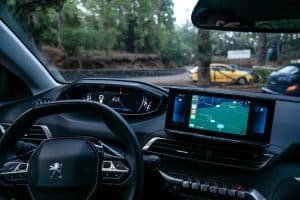How Automakers Are Balancing Hybrids and EVs in Their Lineups
The automotive industry is undergoing a major transformation as the world shifts towards more sustainable and environmentally friendly modes of transportation. One of the biggest changes we are seeing is the increasing focus on hybrid and electric vehicles (EVs). While these vehicles have been around for some time, it is only in recent years that automakers have started to seriously consider them as a viable option for their lineups. In this article, we will look at how automakers are balancing hybrids and EVs in their lineups, and the impact this is having on the industry.
The Need for Balance
With the increasing demand for electric and hybrid vehicles, automakers are facing the challenge of balancing these new technologies with their existing lineup of traditional gasoline and diesel-powered cars. On one hand, they need to cater to the growing market of environmentally conscious consumers who are looking for more sustainable options. On the other hand, they still need to cater to those who prefer traditional fuel-powered cars.
It is a delicate balance that automakers need to strike in order to appeal to a wide range of customers and remain competitive in the market. So how exactly are they doing this?
Introducing Hybrids
As the name suggests, hybrid vehicles combine two types of power source – an internal combustion engine and an electric motor. This allows the vehicle to switch between the two depending on the driving conditions. For example, in stop-and-go traffic, the electric motor does most of the work, while the internal combustion engine takes over on highways or when more power is required.
Hybrids offer a great compromise for consumers who want to transition to electric-powered vehicles but are not quite ready to give up the convenience and reliability of traditional fuel-powered cars. They also help reduce emissions and improve fuel efficiency, making them a popular choice among environmentally conscious drivers.
The Rise of Plug-In Hybrids
Plug-in hybrids, also known as PHEVs, take the hybrid concept one step further by allowing the vehicle to be charged from an external power source. This means that in addition to using the internal combustion engine and the electric motor, the vehicle can also run purely on electric power for a certain distance.
This makes PHEVs even more appealing for those looking to reduce their carbon footprint, as they can drive the vehicle for short distances without using any gasoline at all. However, due to their additional battery and charging capabilities, PHEVs tend to be more expensive than regular hybrids.
The Shift to Electric Vehicles
While hybrids are a great transitional solution, the ultimate goal for many automakers is to produce fully electric vehicles. In recent years, we have seen a significant increase in the number of electric cars being offered by major automakers, and this trend is expected to continue in the coming years.
Electric vehicles (EVs) use electricity as their only power source, making them completely emissions-free. This makes them the ultimate choice for those looking for a sustainable mode of transportation. However, one of the biggest barriers for widespread adoption of EVs is the limited driving range and the need for frequent recharging.
The Importance of Fast Charging
In order to overcome this challenge, automakers are investing heavily in developing fast-charging infrastructure. Fast charging allows drivers to recharge their EVs in a matter of minutes rather than hours, making electric vehicles a lot more convenient and practical for everyday use.
One of the biggest players in this space is Tesla, which has built an extensive network of Superchargers that can give an electric car a 50% charge in just 20 minutes. Other automakers are also working on improving their fast-charging capabilities, as they realize that the success of EVs will depend on being able to provide a fast and reliable charging experience to their customers.
The Road Ahead
With more and more automakers introducing electric and hybrid vehicles, the future of the automotive industry looks greener than ever. However, there are still some challenges that need to be addressed, such as the cost of production, battery technology, and charging infrastructure. But as more advancements are made, we can expect to see an even greater shift towards sustainable transportation.
Final Thoughts
The automotive industry is in the midst of a major transformation, and automakers are working hard to balance the demand for sustainable vehicles while catering to the needs of traditional drivers. Hybrids and EVs are becoming increasingly popular, and it is safe to say that they are here to stay. As technology continues to evolve and the world becomes more environmentally conscious, we can expect to see even more advancements in this space, making sustainable transportation the norm rather than the exception.








